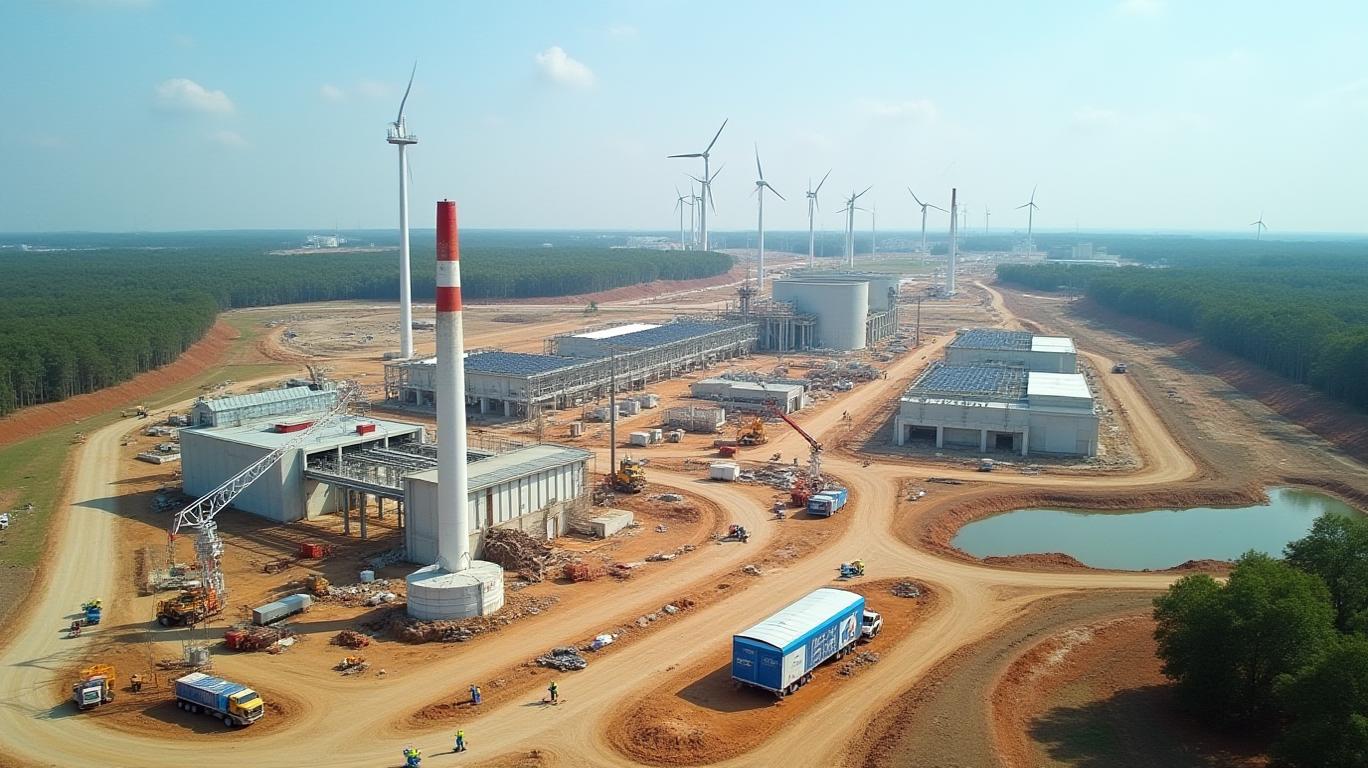Entergy Corporation: Navigating Grid Risks and Regulatory Headwinds for Long-Term Gains
The recent large-scale power outages in Louisiana, orchestrated by the Midcontinent Independent System Operator (MISO) in late May 2025, have thrust
into the spotlight as a critical yet vulnerable player in the energy sector. These outages, affecting over 100,000 customers, underscore the growing challenges of grid reliability in an era of climate volatility and aging infrastructure. For investors, the question is clear: Can Entergy's strategic investments and regulatory resilience position it for long-term success, or are these risks too great to overlook?Operational Challenges: Grid Reliability Under Stress
The May 2025 outages were a stark reminder of Entergy's reliance on MISO's grid management decisions. As MISO's directive to shed load to prevent a broader collapse, Entergy's customers faced intermittent power cuts—a scenario that highlights two critical issues: grid resilience and regulatory dependency.
Entergy's $37 billion, four-year capital plan (through 2028) targets grid modernization, clean energy expansion, and accommodating industrial growth. This includes the Delta Blues Advanced Power Station, a 754-megawatt facility under construction, which promises to bolster capacity while reducing emissions. However, the recent outages reveal that execution remains a hurdle.

Investors will monitor how Entergy's capital spending translates into tangible grid improvements. The May outages, while temporary, could pressure regulators to demand faster progress, particularly as extreme weather events become more frequent.
Regulatory Risks: Navigating Legal and Compliance Headwinds
Entergy's regulatory landscape is fraught with complexities. A recent D.C. Circuit ruling dismissed its challenge to FERC's rejection of tariff changes, citing lack of standing—a legal stumble that underscores the high stakes of regulatory compliance.
The company has faced multi-million-dollar settlements, including a $588 million agreement with the Mississippi Public Service Commission and a $142 million deal with Arkansas over “black box” cost recovery disputes. While these settlements resolve past issues, ongoing cases like the Entergy Arkansas v. FERC matter illustrate the prolonged legal battles ahead.
Moreover, FERC's aggressive enforcement in 2025—such as the $10.9 million penalty against Voltus for market manipulation—highlights the agency's zero-tolerance stance toward compliance breaches. Entergy's ability to avoid such penalties while navigating rate-case approvals will be pivotal to maintaining earnings stability.
Financial Resilience and Strategic Positioning
Despite these challenges, Entergy's 2024 performance offers a glimmer of optimism. Adjusted EPS of $3.65, within the top half of guidance, and a 2025 outlook of $3.75–$3.95 signal financial discipline. The company's focus on affordability programs, such as energy audits and bill management tools, also aligns with regulatory priorities.
The $37 billion capital plan, funded through a mix of debt and rate increases, positions Entergy to capitalize on growing demand for clean energy. Its net-zero by 2050 goal—leveraging nuclear, natural gas, and renewables—could attract ESG-focused investors.
While debt levels remain elevated, Entergy's stable credit ratings (BBB+/Baa2) reflect its operational scale and diversified customer base. For income investors, the 4.2% dividend yield (vs. 2.1% for utilities sector) offers a compelling entry point, provided the company can sustain payouts amid regulatory headwinds.
Investment Implications: A Calculated Gamble
Entergy presents a high-reward, high-risk opportunity. Historically, a strategy of buying Entergy shares five days before quarterly earnings announcements and holding for 30 days since 2020 has delivered an average return of 43.96%, though with a maximum drawdown of -17.56%. This underscores both the potential for significant gains and the inherent volatility tied to such a timing strategy. On one hand, its aging grid and regulatory uncertainties pose execution risks. On the other, its long-term bets on grid modernization and clean energy align with secular trends.
Key Catalysts to Watch:
1. Grid Performance: Avoidance of future outages and measurable progress on MISO's grid stability metrics.
2. Regulatory Settlements: Resolution of pending FERC cases and approval of rate increases to fund capital plans.
3. ESG Adoption: Growth in customer adoption of Entergy's clean energy initiatives and ESG-driven investor interest.
For investors with a 3–5 year horizon, Entergy's dividend yield and strategic investments in resilience could outweigh near-term risks. However, those seeking stability may prefer peer utilities with less regulatory exposure.
Conclusion: A Turnaround Play for Patient Investors
Entergy Corporation is at a crossroads. Its recent outages and legal challenges are sobering, but its capital allocation strategy and regulatory compliance efforts suggest a path to recovery. With a diversified revenue stream, disciplined financial management, and a growing clean energy portfolio, Entergy could emerge as a leader in grid resilience—if it can navigate today's storms.
For investors ready to take on short-term volatility, Entergy's stock—currently trading at 8.5x forward earnings—presents an intriguing opportunity to capitalize on its long-term potential. The grid's future is uncertain, but Entergy's fate hinges on turning operational and regulatory risks into strategic wins.
Act now, but proceed with eyes wide open.

Comments
No comments yet